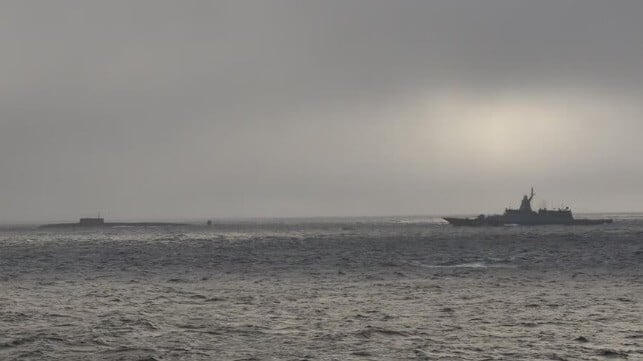USCG Shadows Russian Naval Vessels in Arctic off Alaska

Reports that a U.S. Coast Guard cutter briefly encountered a contingent of Russian naval vessels transiting off Alaska have drawn a lot of media attention. It is a fairly frequent occurrence, but Coast Guard officials announced it to highlight their monitoring mission in the region.
“We are actively patrolling our maritime border in the Bering Sea, Bering Strait, and the Chukchi Sea, with our largest and most capable cutters and aircraft, to protect U.S. sovereign interests, U.S. fish stocks, and to promote international maritime norms,” said Rear Adm. Megan Dean, Commander of Coast Guard District Seventeen. It is the USCG district that encompasses more than 47,000 miles of shoreline in the Arctic and Alaska and a total area of nearly four million square miles.
Four Russian naval vessels were observed on September 15, Sunday, crossing the internationally established Maritime Boundary Line between Russia and the United States. The Russian Surface Action Group consisted of a Severodvinsk-class submarine, a Dolgorukiy-class submarine, a Steregushchiy–class frigate, and a Seliva-class tug.
The USCG cutter Stratton, commissioned in 2012 as one of the Legend-class cutters, was on her normal patrols. She is homeported in Alameda, California, and designed with an endurance of up to 60 days. She observed the Russian vessels, which were initially seen on the Russian side of the border.
At the time they were approximately 57 miles northwest of Point Hope, Alaska, a remote village in the North Slope region of Alaska just above the Arctic Circle.
After observing the Russian vessels cross into the U.S. Arctic in the Chukchi Sea, the crew of the Stratton began shadowing the four Russian vessels.
“Coast Guard Cutter Stratton ensured there were no disruptions to U.S. interests,” said Read Admiral Dean.
According to the report, the Stratton's crew assessed that the Russian vessels were maneuvering to avoid sea ice on the Russian side of the border. The vessels transited about 30 miles into the U.S. Exclusive Economic Zone. The Coast Guard says that under international rules and customs vessels are permitted to transit the line to avoid dangerous conditions.
Earlier in the summer, the USCG also reported that it had encountered Russian and Chinese vessels in the Arctic. Last week, the U.S. military tracked Russian and Chinese planes and surface vessels as they were conducting exercises in the region, and on Saturday, U.S. air tracking identified two Russian maritime patrol aircraft that were tracked in U.S. airspace in the region.
